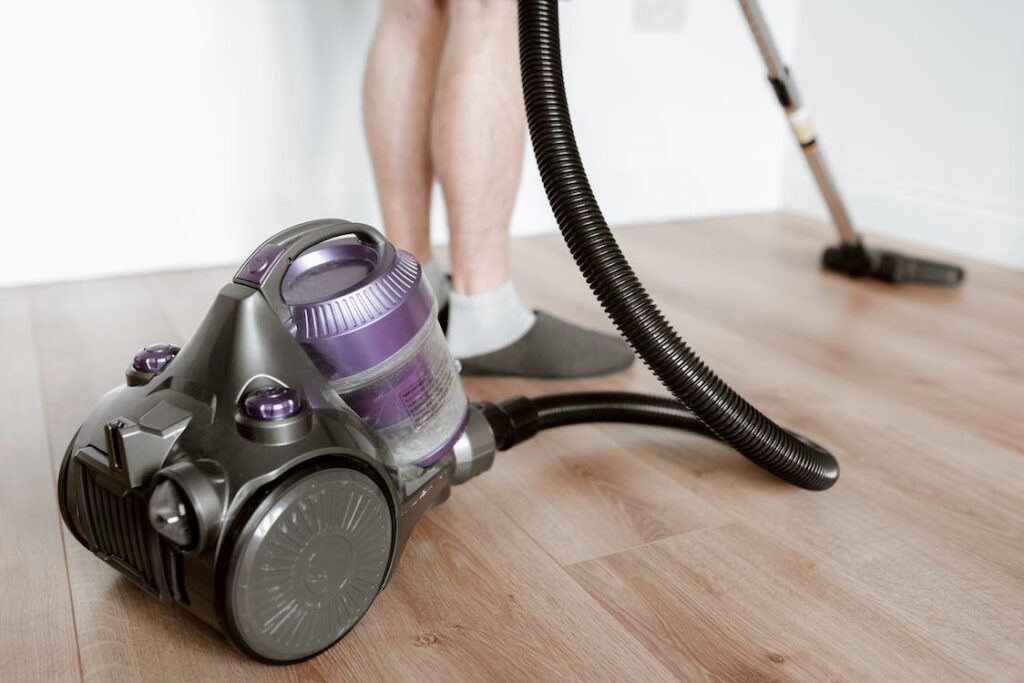As environmental concerns continue to grow, recycling has become an essential practice in our daily lives.
While we often think about recycling paper, plastic, or glass, it’s essential not to overlook electronic waste, which includes appliances like vacuum cleaners.
The lifespan of vacuum cleaners varies, but eventually, they wear out or become obsolete, leading to their disposal.
However,
Disposing of them properly through recycling is crucial to reduce the impact on the environment.
In this guide, we will explore why and how to recycle vacuum cleaners, ensuring you take eco-friendly steps in managing your electronic waste.

Why Recycle Canister Vacuum Cleaners?
The canister vacuums, like many household appliances, contain a variety of materials that can be hazardous if not disposed of properly.
Inside a vacuum cleaner, you’ll find metals, plastics, wiring, and electronic components.
If not managed correctly, these materials can end up in landfills, posing environmental risks.
Let’s discuss this:
- Preventing Landfill Pollution: Recycling vacuum cleaners helps reduce the number of electronic items in landfills, minimizing the potential pollution caused by hazardous materials leaching into the soil.
- Conserving Resources: Recycling vacuum cleaners allows for the recovery of valuable materials such as metals, reducing the need for virgin resources in manufacturing new products.
- Energy Savings: Recycling electronics consumes less energy than extracting and refining raw materials, contributing to energy conservation efforts.
- Economic Benefits: Recycling creates job opportunities and supports the development of a circular economy, which is not only environmentally friendly but also economically sustainable.
Now that we understand the importance of recycling vacuum cleaners let’s delve into the steps you can take to do so responsibly.
How to Recycle Canister Vacuum Cleaners
Recycling vacuum cleaners can be a bit more complex than recycling common household items. However, with the right approach, it’s entirely achievable.
Here’s how:
- Check the Local Recycling Options: Start by checking your local recycling programs or facilities. Not all areas have specialized electronic waste recycling programs, so it’s essential to know what options are available in your vicinity. Some municipalities have e-waste drop-off centers or scheduled collection events. Contact your local recycling authority or visit their website to get the most up-to-date information.
- Contact the Manufacturer: Reach out to the manufacturer of your vacuum cleaner. Some companies have their recycling programs or partnerships with recycling centers. They might offer instructions or services for recycling their products. Additionally, some manufacturers may take back old vacuum cleaners when you purchase a new one.
- Search for E-Waste Recyclers: If local recycling programs or the manufacturer does not provide recycling services, you can look for specialized e-waste recycling centers. Many recycling companies focus on electronic waste, including old vacuum cleaners. These centers have the expertise to disassemble, recycle, or properly dispose of electronic components and hazardous materials.
- Prepare the Vacuum Cleaner for Recycling: Before sending your vacuum cleaner for recycling, there are a few steps you should take:
- Remove any detachable parts or accessories and clean the vacuum cleaner thoroughly.
- Safely disconnect the power cord and any batteries if your vacuum cleaner has a cordless feature.
- Place the vacuum cleaner in a sturdy box or container for transportation.
- Follow Local Regulations: Ensure you adhere to any local regulations regarding the disposal of electronic waste. Some areas may have specific requirements for the handling and transportation of e-waste to prevent environmental harm.
- Drop-off or Arrange for Pickup: Once you’ve located a recycling center or program, either drop off your vacuum cleaner or arrange for a pickup if the service is available. Be sure to follow their guidelines and procedures to ensure safe and responsible recycling.
Reuse and Repurpose Canister Vacuums
Before sending your vacuum cleaner for recycling, consider whether it can be reused or repurposed.
If your vacuum cleaner is still in working condition but no longer meets your needs, you might consider donating it to a local charity or organization.
Many charitable groups accept used appliances, repair them if necessary, and provide them to those in need.
Moreover,
Some creative individuals have found innovative ways to repurpose old vacuum cleaner parts.
For instance, vacuum cleaner motors can be used in DIY projects like homemade air filtration systems or even small-scale wind turbines.
Before parting with your vacuum cleaner, explore these possibilities to reduce waste further.
In Conclusion
Recycling vacuum cleaners is a crucial step in minimizing electronic waste’s impact on the environment.
By preventing potentially hazardous materials from ending up in landfills and conserving valuable resources, you can contribute to a more sustainable future.
Remember to check local recycling options, contact the manufacturer, and prepare your vacuum cleaner properly for recycling.
Additionally,
Consider the possibility of reuse or repurposing before recycling.
By following these steps, you can ensure your old vacuum cleaner finds a responsible and eco-friendly end-of-life solution.